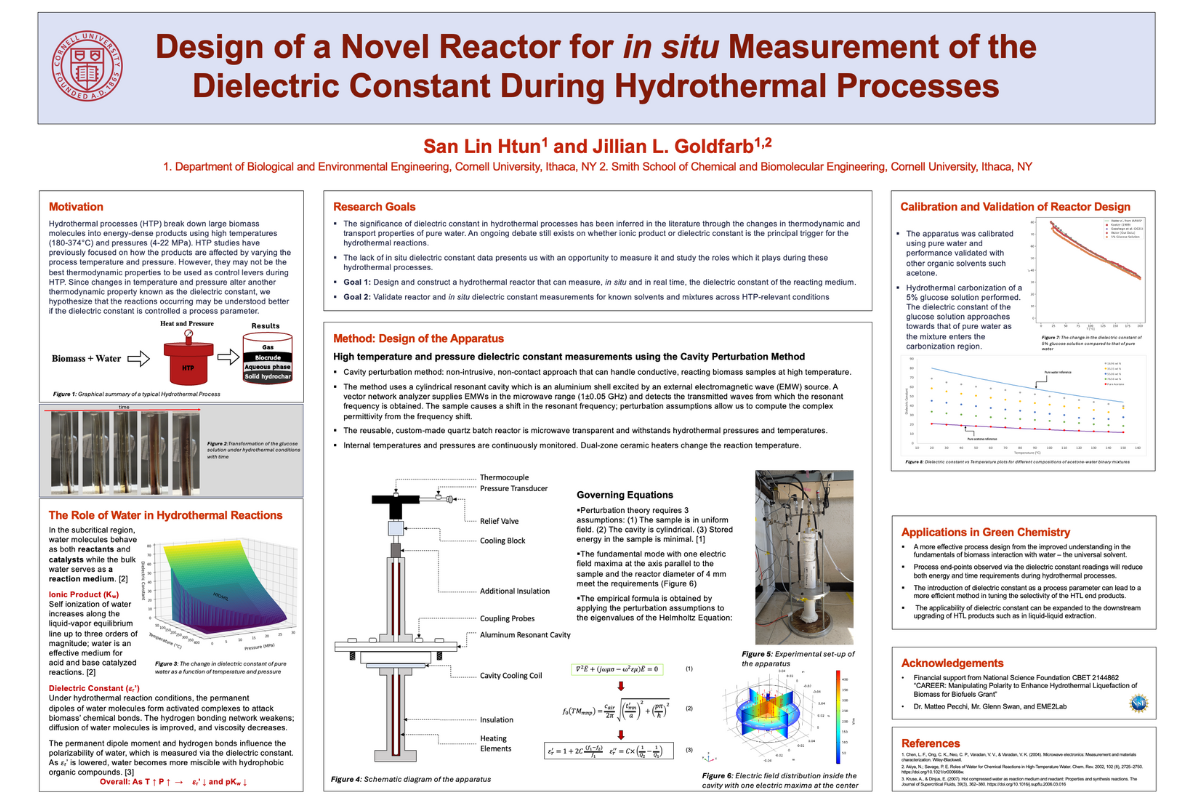
Hydrothermal processes (HTP) are thermochemical processes where large biomass molecules are transformed into energy-dense solid and liquid fuels in subcritical water. Thermodynamic properties during the process are therefore highly influential on the products. Previously, HTP studies have focused on temperature and pressure as process variables. This has not led to a complete understanding of the reactions occurring during HTP. As the wet biomass enters the hydrothermal region, the dielectric constant of water decreases to those of polar organic solvents and water becomes more miscible with usually hydrophobic organic compounds. Yet, there is no measurement data available for the dielectric constant of these processes, despite it being a crucial indicator for hydrothermal reactions. This fundamental gap in knowledge is addressed by the design and construction of a reactor to make in situ dielectric measurements which will clarify its roles during HTP. Process improvements can then be studied by using it as a tunable process parameter to control reaction pathways and produce more selective fuels. On the product side, the lower dielectric values make the aqueous phase of HTP a supersaturated solution of valuable organics which can be extracted using organic solvents. The reactor can also monitor the extraction processes via the dielectric measurements to determine the process end points and solvent efficacies. This will allow us to move away from hazardous solvents by accelerating the identification of greener alternatives; the ability to observe the end point for greener solvents minimizes the residence time, energy requirements and makes the process economically and environmentally competitive, which aligns with the 5th Principle of Green Chemistry (Safer Solvents) and the 3rd of Green Engineering (Design for Separation).